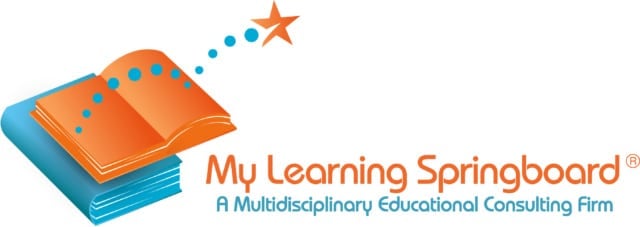 Great writers are crafters of mental imagery, masters of linguistics, and drivers of dialogue. When we think about those who write and write well, we describe their poetic word choice, their lucid description, and their unparalleled ability to put unspeakable ideas into print. It is the content of their writing that causes us to return again and again to their texts — the journalist who humanizes a campaigning politician in their profile or the mystery writer who moves the plot closer to crescendo with nothing more than a few turns of phrase between characters. We read, laud, and teach the craft and content of writing to our students with the same revery, encouraging them to use “juicy words” and “vivid description.” But, we are doing ourselves and our students a disservice by not discussing one of the most important skills writers share: their writing fluency.
Great writers are crafters of mental imagery, masters of linguistics, and drivers of dialogue. When we think about those who write and write well, we describe their poetic word choice, their lucid description, and their unparalleled ability to put unspeakable ideas into print. It is the content of their writing that causes us to return again and again to their texts — the journalist who humanizes a campaigning politician in their profile or the mystery writer who moves the plot closer to crescendo with nothing more than a few turns of phrase between characters. We read, laud, and teach the craft and content of writing to our students with the same revery, encouraging them to use “juicy words” and “vivid description.” But, we are doing ourselves and our students a disservice by not discussing one of the most important skills writers share: their writing fluency.
We infrequently think about writing fluency or typing speed. It is an understood, but rarely talked about, building block to becoming a proficient and skilled writer. Furthermore, few schools systematically include handwriting instruction or typing instruction in their curriculum. Students are expected to somehow build fluency as both writers and typists without the sufficient, and fundamentally necessary, direct instruction and structured practice to achieve proficiency. The groundwork to a writer’s craftsmanship and skillfulness is their ability to expeditiously put pen to paper. Fluency is the silent key to every writer’s success. Not only do fluent writers get their ideas on paper quickly, but by writing or typing with automaticity, they free up mental resources that allow them to become more efficient and adaptable writers, editing and revising as they work, weaving analysis and sophistication into their work without worrying about the mechanical movements of the writing process.
Research and brain science support writing fluency as a key to writing success. Our working memory, the command center of our thoughts, is hardwired for efficiency. Efficiency comes at a cost, however. Our working memory can only hold about 7 pieces of information at a time (Miller, 1956). For the fluent writer, these seven pieces of information being stored could be poetic phrases, the framework for a multi-sentence paragraph, or pieces of plot twisting dialogue between two characters. For the novice writer who is still attending to the mechanics of writing or typing, these seven slots are quickly filled by thinking about how to form the letter m or where to find the comma on the keyboard. They simply do not have the working memory resources to attend to crafting engaging content while struggling to mechanically form letters with their pen or on the keyboard. Research on handwriting speed supports this and, in studies, increased transcription speed positively correlated to the overall quality of writing (Peverly, 2006). Fluent writers are ultimately better writers.
So, while we anecdotally and empirically understand the need for writing fluency and typing automaticity, it is often left unaddressed in the standard writing curriculum. Students learn craft and content and writing fluency is expected to develop along the way. For some, it naturally does and they become quick and accurate writers and typists. But, for those students who struggle to incidentally learn the efficient mechanics of writing and typing, their dysfluency continues to hold them back from developing a stronger repertoire of writing skills.
Luckily, writing fluency and typing automaticity can be developed with a little time and attention (and perhaps, even some fun!). Here are some ideas for how you can build you student’s typing and writing fluency:
- Try out some engaging apps and computer programs that work to build mechanical automaticity in handwriting or typing. Typingclub.com offers free typing lessons and games. Apps like iTrace and Writing Wizard teach students letter formation on your iPad. Typing fluency can be achieved in no time while playing games! As your student becomes a more proficient typer, try a keyboard cover to make it more challenging!
- Find a penpal: Writing is purpose driven. For the emerging typist, set up an email account and find a responsive recipient. Regular email correspondence to a favorite aunt or faraway friend from camp is a motivating force to sit down and type. This is true of the budding writer as well. Pick out some fun letter paper and make the walk to the mailbox a regular routine. Fluency builds when there is high motivation to write with length and strength to a loved one!
- Lists, lists everywhere!: Make your student the captain of your household list keeping, either on paper or in a word document. Shopping lists are always a great excuse to write. But, there are plenty of reasons to make a list. Places to Visit, Questions About Outer Space, and the Definitive Ranking of Ice Cream Flavors make for great conversations and even better list writing.
- Start a family blog or journal: Communal projects are a great way to build camaraderie and to sneak in some writing! Start a family journal or blog. Each family member can write a quick paragraph about their week with a snapshot. Your student will be excited to read and contribute, building their writing fluency as they go!
By Marisa Krohn, Ed. M. and Learning Specialist, and Brad Hoffman, M.S.Ed. and Certified Educational Planner
Miller, G. A. (1956). The magical number seven, plus or minus two: some limits on our capacity for processing information. Psychological Review, 63(2), 81-97.
Peverly, S.T. (2006) The Importance of Handwriting Speed in Adult Writing. Developmental Neuropsychology, 29, 197-216.

